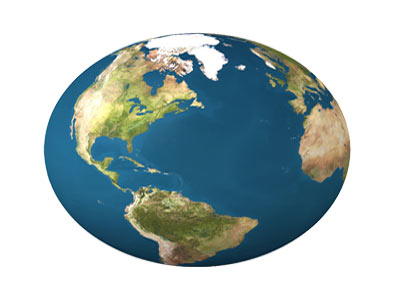What is the basic composition of the Earth?
Earth is the third planet from the Sun and the densest and fifth-largest of the eight planets in the Solar System. It is also known as watery planet. The planet formed 5.54 billions years ago. The interior of the Earth, like that of the other terrestrial planets, is divided into layers by their chemical or physical properties, but unlike the other terrestrial planets, it has a distinct outer and inner core. The outer layer of the Earth is a chemically distinct silicate solid crust, which is underlain by a highly viscous solid mantle and the thickness of the crust varies: averaging 6 km under the oceans and 30–50 km on the continents. The crust and the cold, rigid, top of the upper mantle are collectively known as the lithosphere, and it is of the lithosphere that the tectonic plates are comprised. Beneath the lithosphere is the asthenosphere, a relatively low-viscosity layer on which the lithosphere rides. Beneath the mantle, an extremely low viscosity liquid outer core lies above a solid inner core. The inner core may rotate at a slightly higher angular velocity than the remainder of the planet.

Earth View


